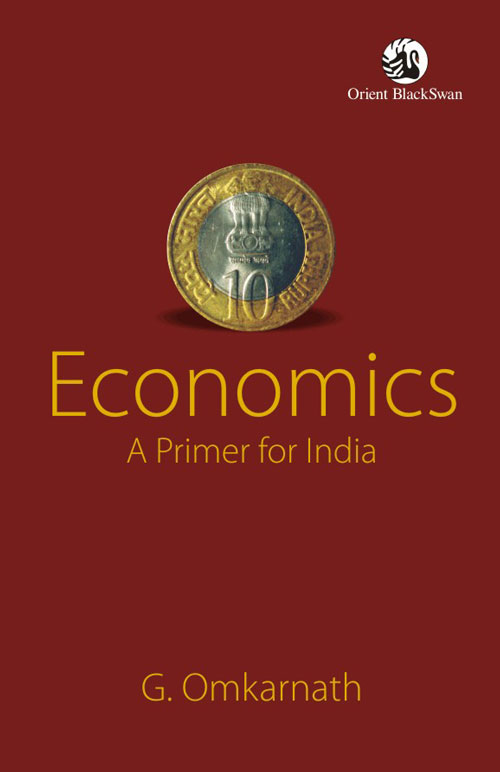Review of Economics: A Primer for India
Download the WEA commentaries issue ›
A review of Omkarnath G. Economics: A Primer for India, Hyderabad: Orient Blackswan Private Limited 2013, xix + 271pp. ISBN 978 81 250 4632 5 by Stuart Birks and Srikanta Chatterjee

It would be fair to say that the importance of the discipline of economics as a social science and its usefulness in public policy-making are widely recognised. However, the manner in which its academic curricula has evolved over a long time has come to be increasingly criticised as either too narrow or unnecessarily abstract or both. In recent times lay observers and professional policy makers alike have questioned the relevance of the subject when its practitioners fail to foresee such catastrophic “real world” phenomena as the global financial crisis, for example. The questions as to how economics should be approached as an academic discipline, what sort of issues it should deal with and what other cognate disciplines an aspiring economist should also be exposed to are being raised around the world.
The present book is largely a response to these challenges. It seeks to address another challenge, viz. to make the subject particularly useful and relevant in an Indian context. It seeks to develop an approach that enables the reader to understand the functioning of the society around them within an analytical framework which is not too “technical” or abstract. In its two major parts and a shorter addendum, it does put together a coherent account of the Indian economy in both its existing structure and some temporal changes to it. As a social science, economics cannot free itself completely from a political/ideological leaning in its discourses. The present book probably leans toward a “leftist” or a Marxian framework. Its intended readership, as stated in the preface, are the undergraduates in Indian tertiary institutions and the interested non-specialists wishing to understand the Indian economy and its changes. It couches its discussion of the selected topics around what may be termed a “common sense” approach, rather than a particular theoretical framework. Rudiments of economic theory are introduced in the very last chapter which should help provide an analytical perspective to the topics discussed in the book. This approach has helped the book to avoid being entirely descriptive or using a conventional theoretical framework in all its discussions, as is often done in books targeting both the undergraduate student and the ”interested layman”.
With the Indian economy as its canvas, references to such issues as unpaid or underpaid labour (in households or the casual labour market); externalities such as pollution and its control through legislation; unintended consequences deriving from some labour and trade union laws for example, or the manipulation of the Minimum Support Prices of food grains in the post-1991 reform era would have further enhanced the quality of the book. But it is, admittedly, a beginner’s text; it does not therefore need to cover everything that is pertinent.
The book has some strengths which may appeal to heterodox and pluralist economists. It follows in the tradition of Kurien’s ‘real life economics’, attempting to develop an analysis building on observations in the real world. Theory comes later. This recalls an earlier tradition in economics, now largely lost with the growth of the tendency, identified by Kuhn, to force nature into our conceptual boxes.
Omkarnath recognises the importance of theory, and much of his description reminds us of conventional perspectives. However, there are important differences in terms pf the emphasis and the avoidance of extreme and unrealistic assumptions. He stresses the importance of institutions, as with the nature of competition between producers, for example. The distinction between inputs and outputs is rightly challenged on the basis that most of a firm’s outputs serve as inputs to other firms and its inputs are outputs from other firms. This makes categorisation into input prices and output prices problematic at best, especially where it is assumed that one of these varies while the other does not. In other situations ceteris paribus assumptions may make little sense where many things are related to each other. For example, if price changes result in income changes to the suppliers, then it may not mean much to consider price changes while incomes are constant.
Accepted relationships for exchange are also challenged. Omkarnath claims that 94 percent of the Indian workforce operates in the unorganised sector, with complex social relations and systems of production. More generally, in the labour market the emphasis on rates of pay is questioned on the grounds that “moral incentives and opportunities for ‘self-actualisation’ may be at least as important as material rewards”. As Minsky has said, theory serves as both a lens and a blinder. Starting from accepted theory we may be blind to alternative influences.
The book is very readable and illustrates some of the problems with conventional perspectives on economic behaviour. It is likely to be thought-provoking for many, including newcomers and those with a grounding in mainstream theory. An alphabetical index at the end of the book would have been most useful to readers wishing to go back to a topic for another look.
From: p.11 of World Economics Association Newsletter 5(2), April 2015
https://www.worldeconomicsassociation.org/files/Issue5-2.pdf

An informative as well as thoughtful review.